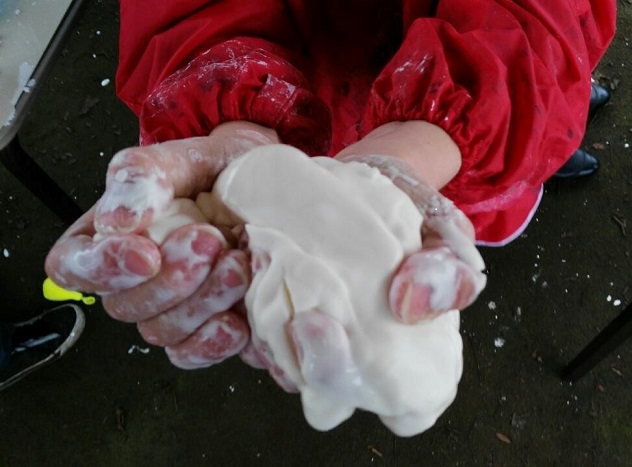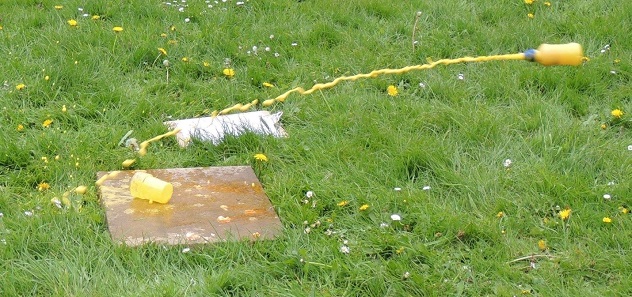
Oobleck: Solid to liquid and back again just with the squeeze of a hand.
I’m a STEM Ambassador and professional science presenter. I run a free lunchtime science club for Year 6 at a local primary school. We use about £20 of materials each term, so you can tell we keep it simple. When I first started the club in 2013, about half of the thirty children signed up. This year, I have to run each session twice because every child in the class wants to join in. Their enthusiasm is wonderful!
The sessions are intended to support classroom learning while exploring in a way not possible within the timetable. I also use it to empower the pupils. On the Friday of our School Science Week, the club members take to the playground to perform some pre-rehearsed “science busks” to the children in the lower years. This might be making stick bombs, paper helicopters, straw oboes or some impressive sci-fi sounds with the help of a slinky spring and bucket. Year 6 get to share what they have learned and the younger pupils feel the joy of the simple tricks and scientific explanations. It creates a real buzz in the playground.
We try to work outside whenever possible; partly as a way to minimise our inevitable mess but partly to advertise the excitement of the club to the rest of the school. When I was seeking topics at the start of the year, the pupils were really keen to build and launch rockets because they watched last year’s club exploring compressed air rockets, vitamin C tablet powered rockets… and the water rockets which soaked everyone!

A Vitamin C tablet powered bottle rocket. The clipboard for data recording was abandoned when this rocket took off earlier than expected. The pupils quickly learned that more tablets lead to a faster and more powerful launch!
The rockets are being saved until the summer term, but what are we up to in the meantime?
So far, we’ve explored states of matter using PVA glue slime and the cornflour/water oobleck which is normally reserved for EYFS pupils. The Year 6's loved exploring how both substances behaved differently under pressure whilst revising the solids/liquids terminology and properties. They got absolutely coated in the cornflour, as did the outdoor classroom where we were working, but the club members had a chance to share their knowledge with the crowd of spectators from lower years who were desperate to join in.
After that we spent a couple of weeks sending Morse code messages between classrooms, using the simple telegraph machine which we built for last year’s 175th anniversary of the school. We’ve just started making some light-up cards to brighten the winter days; copper foil tape, button cells and LEDs make the project cheap and relatively robust. The pupils know they are learning about circuits, I don’t try to sneak the science in, it’s just we have the freedom to work how we want to.
Our future plans include extracting our own DNA and looking at it (and other small things) under the microscope. We have booked the free Royal Microscopical Society kit loan to use within school and science club will have their turn too. When I did my PhD, I didn’t expect my microscopy experience to be used with school children, but the rewards of sharing my knowledge are huge.
You can read more about the RMS kit loan scheme here.
The pupils are also really excited about taking part in the Royal Horticultural Society’s Rocket Science project. If you haven’t already heard, seeds of rocket (a salad plant) have been sent to the International Space Station where they are orbiting the earth every 90 minutes as I type this text. In the spring of 2016 they will be returned to Earth where they will be sent to schools to be grown along with control seeds which have not been to space. The pupils will then grow them according to a supplied protocol and record their data and observations to feed back into the national project. You can read more about it here. At the time of writing they still had some packs available for schools.
So, with space seeds, rockets, slime, light up cards, DNA extraction, bubble blowing and busking to do, it’s going to be a busy year at science club!
Dr Sarah Bearchell is a STEM Ambassador and the founder of Sarah’s Adventures in Science (www.bearchell.co.uk).

